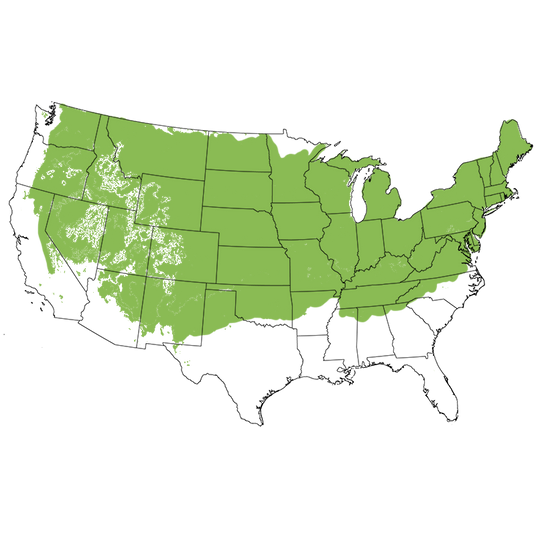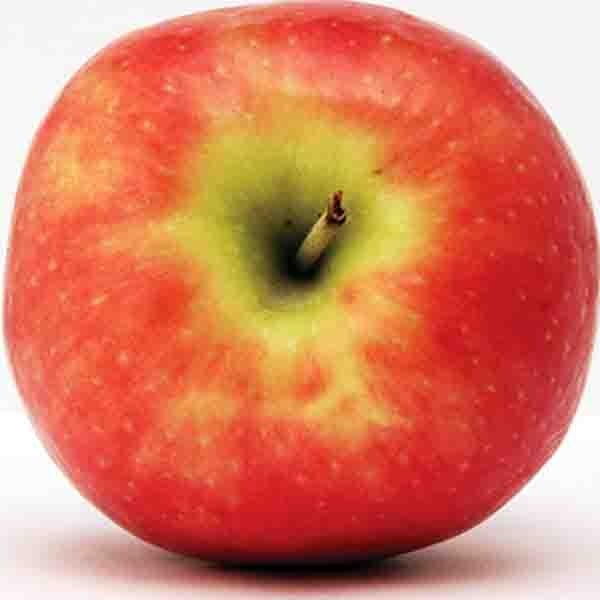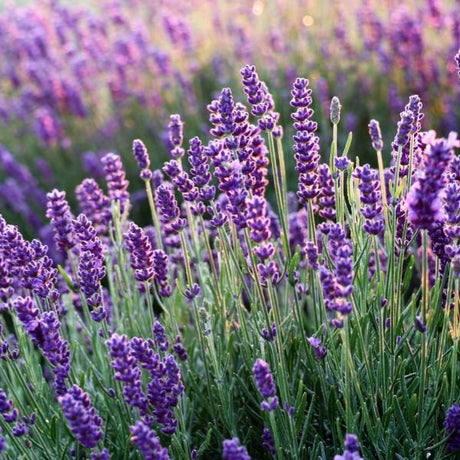Freedom Apple Tree
Malus 'Freedom'
- Stay Protected with Plant Sentry ™
Freedom Apple Tree is backordered and will ship as soon as it is back in stock.
Plant Sentry™
Plant Sentry™

Plant Sentry™ Protected
Your order is protected by our compliance system that:
- Prevents restricted plants from shipping to your state
- Ensures plants meet your state's agricultural requirements
- Protects gardens from invasive pests and diseases
Delivery and Shipping
Delivery and Shipping
Delivery and Shipping
Fast, Safe Plant Delivery
Ships in 3-4 business days • Tracking provided • Weather protected
| Under $50 | $9.99 |
| $50 - $99.99 | $14.99 |
| $100 - $149.99 | $16.99 |
| $150+ | $24.99 |
✓ Zone-specific timing • ✓ Professional packaging • ✓ Health guarantee
Understanding Plant Options
Nature Hills offers plants in two main formats:
- Container Plants: Grown in pots with soil, sized by container volume and plant age
- Bare Root Plants: Dormant plants without soil, sized by height measurements
Container Plant Sizes
Container sizes indicate plant age and growing capacity rather than liquid volume equivalents. Our containers follow industry-standard nursery "trade gallon" specifications, which differ from standard liquid gallon measurements.
Young Plants (6 months to 18 months old)
| Container Size | Actual Volume | Metric Equivalent |
|---|---|---|
| 2" x 2" x 3" | 0.18 - 0.21 dry quarts | 0.20 - 0.23 dry liters |
| 4" Container | 0.31 - 0.87 dry quarts | 0.35 - 0.96 dry liters |
| 4.5" Container | 0.65 dry quarts | 0.72 dry liters |
| 6" Container | 1.4 dry quarts | 1.59 dry liters |
| 1 Quart | 1 dry quart | 1.1 dry liters |
| 5.5" Container | 1.89 dry quarts | 2.08 dry liters |
Established Plants (18 months to 2.5 years old)
| Container Size | Actual Volume | Metric Equivalent |
|---|---|---|
| 2 Quart | 2 dry quarts | 2.2 dry liters |
| #1 Container | 2.26 - 3.73 dry quarts | 2.49 - 4.11 dry liters |
| 5" x 5" x 12" | 3.5 - 4.3 dry quarts | 3.85 - 4.74 dry liters |
Mature Plants (2-4 years old)
| Container Size | Actual Volume | Metric Equivalent |
|---|---|---|
| #2 Container | 1.19 - 1.76 dry gallons | 5.24 - 7.75 dry liters |
| #3 Container | 2.15 - 2.76 dry gallons | 8.14 - 12.16 dry liters |
Large Plants (3-5 years old)
| Container Size | Actual Volume | Metric Equivalent |
|---|---|---|
| #5 Container | 2.92 - 4.62 dry gallons | 12.86 - 20.35 dry liters |
| #6 Container | 5.25 - 6.01 dry gallons | 23.12 - 26.42 dry liters |
| #7 Container | 5.98 - 6.53 dry gallons | 26.34 - 28.76 dry liters |
Bare Root Plants
Bare root plants are sold by height from the root system to the top of the plant. Plants may exceed minimum height requirements.
Common Sizes:
- Trees: 1 foot, 2 feet, 3 feet, 4 feet, 5 feet, 6 feet
- Shrubs & Perennials: 1 foot, 18 inches, 2 feet
Important Notes
Container Volume Specifications
- Trade Gallon Standard: Our containers follow industry-standard "trade gallon" specifications established by the American National Standards Institute (ANSI Z60.1) for nursery stock
- Volume Variations: Actual soil volume may vary due to plant root systems and growing medium settlement
- Age Indicators: Container size primarily indicates plant age and maturity rather than liquid volume equivalents
Growing Conditions
- Plant size can vary based on variety and growing conditions
- Container size helps indicate plant maturity and establishment level
- Larger containers generally mean more established root systems and faster landscape establishment
Seasonal Availability
- Bare root plants are available seasonally when dormant
- Container plants are available throughout the growing season
- Specific varieties may have limited availability in certain sizes
Questions?
For questions about specific plant sizes or availability, please contact our plant experts who can help you choose the right size for your landscape needs.
Plant Highlights
Freedom Apple Tree highlights at a glance!
-
Botanical Name
-
Brand
-
Growing Zones4, 5, 6, 7
-
Growth RateModerate
-
Mature Height
-
Mature Width
-
Leaf Color
-
Flower Color
-
Fall Color
-
Pollinator FriendlyYes
-
Pollinator Required
-
Bloom PeriodEarly Spring, Late Spring
-
FragrantYes
Characteristics
Where To Plant
When To Prune
- Late Winter
Water & Moisture Needs
- Moderate
Sunlight Needs
Soil Needs
- Well Drained

Growing Zones
The Spectacular & Tasty Freedom Apple Tree!
- Tasty Red Fruit with Yellow Highlights
- Creamy Colored Flesh
- Crisp & Juicy Sweet-Tart
- Fragrant White Blossoms!
- Pollinators Galore
- An Early Late-Season Harvest Variety
- Produces Abundantly After Established
- Low-Maintenance
- Large Crops!
- Disease Resistant!
- Pollinators are UltraMac, Liberty & Cortland
- Improved Disease Resistance
- Great for Fresh Eating, Cider, Baking & Cooking Apple
- 800-1000 Chill Hours
Would you like a variety of apples that frees you from many of the difficult tasks of producing a bumper crop? Well, you are in luck, give the Freedom Apple Tree (Malus x 'Freedom') a try. While many apples are bothered by many diseases, this variety was bred to resist most of them.
Your Freedom Apple Tree will give you an abundance of medium to large, nicely rounded, bright red fruit, that has a few touches of yellow. The creamy-colored flesh is crisp and juicy, with a sweetly tart flavor.
But before the apples, come the blossoms. In April, you can stroll back to your tree and watch the bees and butterflies flitting from blossom to blossom, pollinating for you. The fragrant white blooms put on a lovely spring show!
However, you will need to have another pollinator to make the most of your Freedom Apple tree--varieties like the UltraMac, Liberty and Cortland are all varieties that bloom about the same time and will help pollinate your tree.
How to Use Freedom Apple Tree In The Landscape
The gleaming floral show in spring makes Freedom Apple a lovely specimen tree and garden anchors, you will enjoy seeing your blossoms swarming with pollinators and watching your harvest grow out of a window or off the porch.
Shade your patio and garden beds with the lovely green foliage or picnic beneath the branches or is a good choice to add to your home apple orchard of any size.
Dual-purpose edible landscaping and homesteaders all enjoy the convenient size of this tree. Easily tucking into both front garden beds and back yard orchards. Lovely all growing season, these are beautiful focal points, destination spots in a wildflower field or meadow and idyllic cottage garden additions!
Imagine a lovely row of these lining your driveway or defining your property with the 4 season interest these great trees provide!
Freedom apples are fantastic multi-purpose fruit! Want to eat your apples fresh? Or crush them into cider? Maybe dry them for later? Or cook them into pies or apple cobbler? This variety is perfect for all!
#ProPlantTips For Care
This apple makes the most of a wide variety of zones and produces late-season apples sooner than most varieties. When you are ready to plant, find a spot that has full sun, but if you can't, the
Freedom Apple Tree can grow where it is sunny just half of the day. Make sure that the soil is well-drained and has plenty of organic matter. This variety needs an inch of rain a week so if you have less than that you will want to water it.
Prune when dormant in late winter to open the canopy and keep sunlight and air circulation into the interior. This allows proper air circulation and sunlight to enter the interior of your tree to further prevent disease and fungal issues.
A generous layer of mulch helps retain soil moisture as well as insulate the root system from heat and chill. Your tree will appreciate some higher nitrogen and fertilizer when it is fruiting.
With its improved disease resistance against Apple scab, Powdery mildew, Cedar Apple Rust and Fire Blight, so you can take the time to relax and enjoy its lovely blooms and form rather than checking its leaves for signs of infection. Freedom Apples are delicious and allow you plenty of ways to enjoy them after harvest.
Nature Hills ships fruit trees already at least 3 years old! You won’t have to wait long for your first harvest because the Freedom Apple tree produces crops between 3-5 years of age!
Freedom Apple Tree lives up to its name by freeing up your gardening time while produces ample apples all season long. This variety also frees you from worry.
Pop one of these in the ground, and in a few years you will be in apple heaven. These brilliant trees get a lot of attention, so order your Freedom Apple Tree in time for spring shipment from NatureHills.com!
Freedom Apple Tree Frequently Asked Questions
When to Plant Freedom Apple Trees
Planting Bareroot trees as soon as you can dig a hole in spring and until hot weather, the earlier the better. Plant container Apple trees throughout the growing season with complete success - that is the benefit of container plants - to extend the planting season. Your County Agricultural Extension Office is a great resource for first and last frost dates in your area.
How to Plant Freedom Apple Trees
Dig a large hole only as deep as needed to accommodate the bareroot or container root ball, and twice as wide. Add Nature Hills Root Booster to speed root establishment. Remove the pot or bag and situate it into the hole so the top of the soil (soil line if bareroot), is level with the new location's soil being careful not to plant too deep. Water in again very well and backfill with the same soil you dug up, tamping down gently to ensure there are no air pockets.
Top off with a 3-4 inch thick layer of Arborist mulch. Consider staking your tree to keep its trunk growing straight for the first year to ensure it stands tall against strong winds and drifting snow.
When to Prune Freedom Apple Trees
Trim off any broken branches from delivery as soon as you take them out of the box. Prune and trim apple trees while dormant, in late winter or early spring, before you see new growth.
How to Prune Freedom Apple Trees
Dormant prune to:
- Remove any double leaders or narrow crotch angles
- Eliminate any crossing branches
- Thin interior branching and leave the fruiting spurs and strong branches in place opening up the canopy
- Branching at least 24-36 inches above the ground
Prune Apple trees in the summer to:
- Control size and shape by reducing the length of longer new growth on vigorous trees
- Remove water sprouts on the main trunk or older branches in the crown
- Remove suckers at the base of the trunk
- Thin fruit during heavy years on established trees
How to Care for Freedom Apple Trees
Growing an apple tree is easy when proper soil, good drainage, attention to moisture, and regular fertility are maintained. Once you've chosen an apple tree that works for your climate, in the size you need for your landscape, and its pollinator (if needed), then you've accomplished half the battle!
- Apple trees do best in full sun and well-drained soil
- Water your apple trees when it gets dry - especially during the fruit production stage, and drought periods to keep it stress-free
- Use arborists' wood chips to mulch over the roots of your apples and have your soil tested to see what your soil may be lacking before adding fertilizers
- Maintenance pruning and shaping
Apple trees will tolerate a wide range of soils, so long as water and nutrients are not limited and the pH level is adequate.
How to Fertilize Freedom Apple Trees
For the first year, water alone is most important. It is always best to get a soil test to see what your soil is lacking before adding more fertilizers. Once established, a fertilizer routine may be beneficial. We do offer some excellent slow-release organic options, applied according to the package directions.
Fruit trees need more phosphate and it's possible to apply too much nitrogen which affects the soil's pH. Test soil acidity or alkalinity using a pH Tester.
Fertilize in spring when you first see new growth emerging.
- Don't overdo it
- Phosphates are your friends
- Pay attention to pH in areas with extremely high or low soil pH
- Follow the directions
Freedom Apple Tree Pollinating Info
Freedom is not self-fruiting and needs a pollinating partner. Pair with one of these varieties:
Harvest Times for Freedom Apple Trees
Freedom’s are typically ready to harvest in September.
Early-Season? Mid-Season? Late-Season? The terminology can be confusing for new apple tree growers. Weather, climate and your tree determine when it's ripe.
For Apples:
- Early-season is usually June-July
- Mid-season can be August-September
- Late-season can be from late September-November
The growing season consists of spring, summer, and fall, and varies with climate and weather. Areas with longer growing seasons in the warmer hardiness zones can greatly affect the harvest times for each particular apple variety grown in your area.








